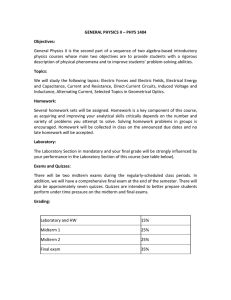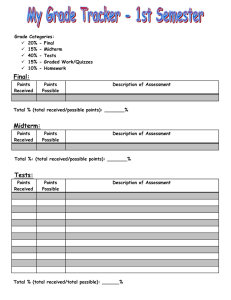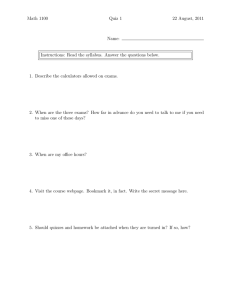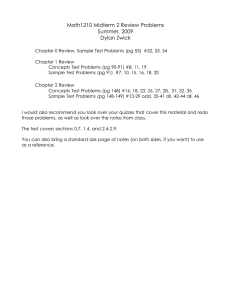Physics 106 - How Things Work II Course Information
advertisement
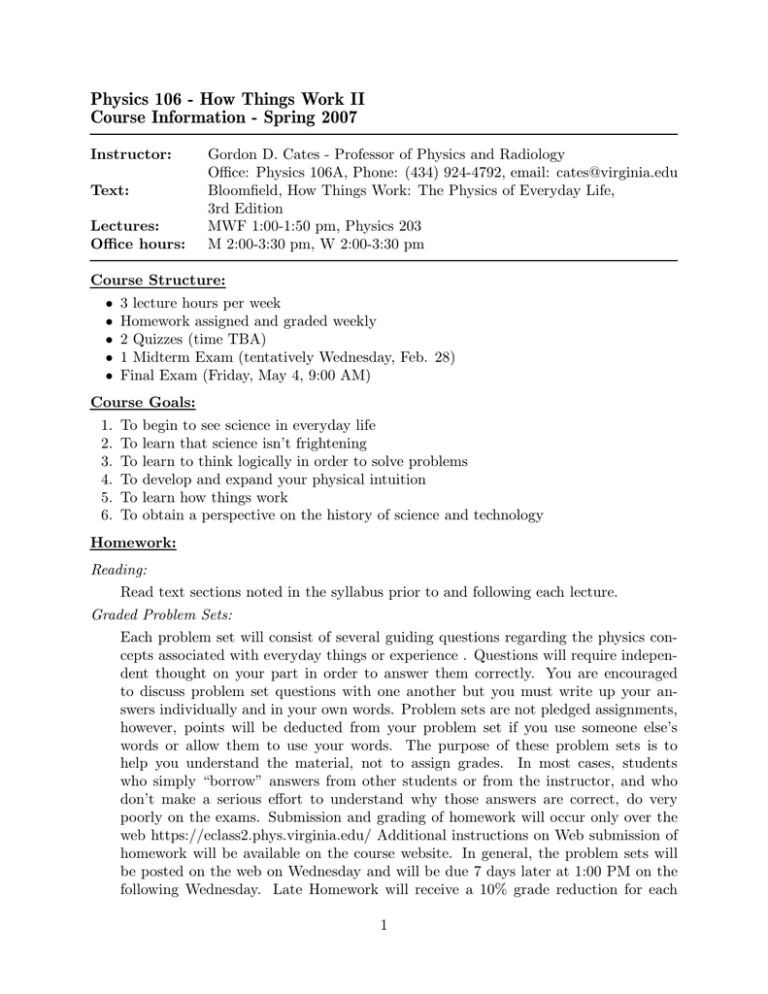
Physics 106 - How Things Work II Course Information - Spring 2007 Instructor: Text: Lectures: Office hours: Gordon D. Cates - Professor of Physics and Radiology Office: Physics 106A, Phone: (434) 924-4792, email: cates@virginia.edu Bloomfield, How Things Work: The Physics of Everyday Life, 3rd Edition MWF 1:00-1:50 pm, Physics 203 M 2:00-3:30 pm, W 2:00-3:30 pm Course Structure: • • • • • 3 lecture hours per week Homework assigned and graded weekly 2 Quizzes (time TBA) 1 Midterm Exam (tentatively Wednesday, Feb. 28) Final Exam (Friday, May 4, 9:00 AM) Course Goals: 1. 2. 3. 4. 5. 6. To To To To To To begin to see science in everyday life learn that science isn’t frightening learn to think logically in order to solve problems develop and expand your physical intuition learn how things work obtain a perspective on the history of science and technology Homework: Reading: Read text sections noted in the syllabus prior to and following each lecture. Graded Problem Sets: Each problem set will consist of several guiding questions regarding the physics concepts associated with everyday things or experience . Questions will require independent thought on your part in order to answer them correctly. You are encouraged to discuss problem set questions with one another but you must write up your answers individually and in your own words. Problem sets are not pledged assignments, however, points will be deducted from your problem set if you use someone else’s words or allow them to use your words. The purpose of these problem sets is to help you understand the material, not to assign grades. In most cases, students who simply “borrow” answers from other students or from the instructor, and who don’t make a serious effort to understand why those answers are correct, do very poorly on the exams. Submission and grading of homework will occur only over the web https://eclass2.phys.virginia.edu/ Additional instructions on Web submission of homework will be available on the course website. In general, the problem sets will be posted on the web on Wednesday and will be due 7 days later at 1:00 PM on the following Wednesday. Late Homework will receive a 10% grade reduction for each 1 day (24 hours) that the homework is late. Solutions to problem sets will be posted on the E-Class Web server and on the class Web page approximately five days after the homework due date. Late homework will not be accepted once the solutions have been posted on the web. In general, there will be no such thing as an “excused” late homework. That is, the 10%/day grade reduction described above will almost always apply. Exceptions for severe illness or a serious personal crisis or emergency will generally be granted, but will require documentation from a doctor, a dean, etc. Exceptions related to religious holidays must be obtained in advance. On the positive side, your lowest homework score will be dropped. Thus, you are covered for at least one unforeseen circumstance that is not as extreme as those mentioned above. On the issue Quizzes Quizzes will be a mixture of questions requiring a short written answer and multiplechoice questions. The quizzes will have a similar format to both the midterm and the final and will thus be good practice. Exams The Midterm Exam (50 minutes) and Final Exam (2 hours 50 minutes) will emphasize understanding of concepts so that memorization will be far less valuable for answering the questions than basic insight into how things work. The exams will in general include both short-answer questions and multiple-choice questions. No make-up exams will be given without prior permission. Valid excuses for missing an exam may include: severe illness, serious personal crisis or emergency, or religious holidays. Grading Final course grades will be based on knowledge of the course material as dermined by performance on homewor, quizzes and exams using the following weighting: Homework: 30% Quizzes: 15% Midterm exam: 20% Final exam: 35% 2
